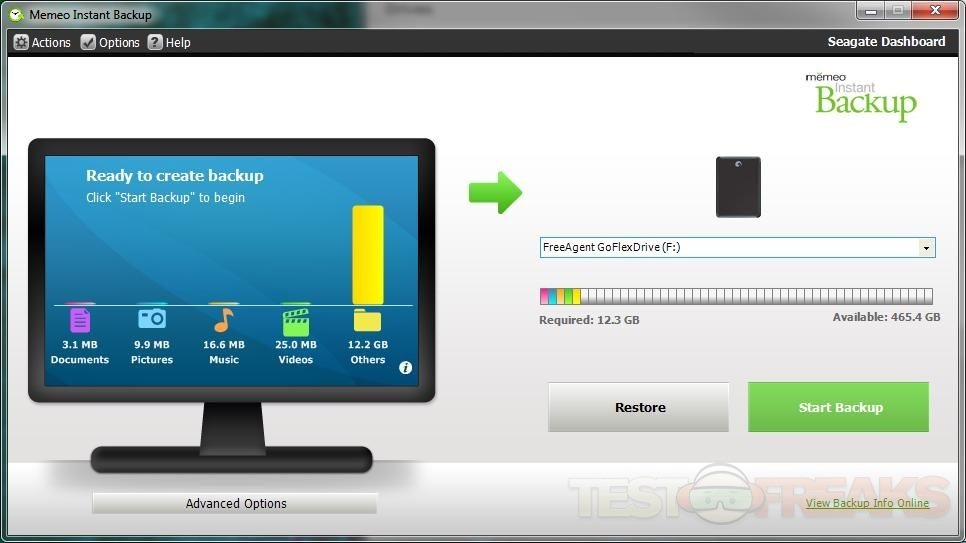RequestCracks.com - Request a Crack, Dongle Emulator or Dongle Crack. Dongle Emulation Service for any software.
Seagate Goflex Home disk maintenance. I’ve been generally happy with my Seagate Goflex Home NAS device. I purchased the 2. Best Software For Architecture Diagrams Definition. TB model at COSTCO a year ago and have been running Acronis backups to it for the past eight months. I have Acronis configured such that incremental backups of all my computers are copied to the NAS six days a week and a full backup image is generated every Sunday.

Recently backups on my Livingroom PC started failing in Acronis and after working with Acronis support it was determined that the best course of action would be to re- create the backup job (don’t even get me started on Acronis support). I re- created the Acronis backup job for my Livingroom PC and ran a full backup, then decided to delete all the previous backups. While trying to delete one of these backups, I ran into an interesting problem with the Seagate Goflex Home NAS. I could delete the file using explorer, but the file would *magically* reappear seconds after I deleted it.
After doing this a couple of times it became apparent that the file was stuck somehow. I accessed the Seagate Dashboard and opened the Seagate web preferences window and checked to ensure that the NAS operating system software was up- to- date. It was up- to- date and no errors were logged in this interface whenever I attempted to delete this file using windows Explorer.
Celiac disease is a unique autoimmune disorder in which the environmental precipitant, gluten, is known. Originally considered a rare malabsorption syndrome of. Notebook a partir de R$ 1.048,98 em até 12x no Buscapé. Compare produtos, preços, confira dicas e economize tempo e dinheiro ao comprar! Confira opiniões de.
I then accessed the device storage folders using the web based interface and attempted to delete the file this way. When selecting Delete, the system threw a file system error deleting the file. According to the support forums, the only option was to format the entire drive using the web preferences interface, but I did not want to lose all the other data on it. Copying data to and from this drive is extremely slow at 6- 1. So I ejected the drive from from the base and tried attaching it as a SATA drive to my PC. The idea was to run chkdsk on the drive to see if there were any recoverable file system errors chkdsk could fix.
The problem I ran into with this idea is the proprietary drive enclosure. The thick plastic cover prevents most SATA and SATA POWER adapters from reaching the drive SATA connectors: So I had to digg through my box- o- cables (yes every computer geek’s got one) to find some SATA power adapters narrow enough to fit past the plastic enclosure and reach the sata jack on the drive itself. The SATA cable itself needed some trimming work with an exacto knife but that ended up working quite nicely: Next, I attached this drive to my PC’s motherboard and ran chkdsk on the disk volume which is surprisingly formatted as NTFS file system. Long behold, chkdsk found loads of problems and repaired them without harming the rest of my data.
Now my NAS works like new again and I didn’t have to format the whole thing.
- Background No effective systemic therapy exists for patients with advanced hepatocellular carcinoma. A preliminary study suggested that sorafenib, an oral multikinase.
- Kynurenic acid (KYNA), a tryptophan metabolite, inhibits proliferation of several cancer cell lines including colon cancer, renal cancer and glioblastoma cells.
Related Posts
- What Does Adobe Media Encoder Do Cs6 Adobe
- Pc Security Free Download With Keygen Software
- Access Update Query Left Join Example
- Calculo De Uma Ou Mais Variaveis Download Adobe
- Windows Can Only Install Gpt Disk
- Fedex Driver Job Vacancies In Dubai
- Go Away Big Green Monster Coloring Page
- Binomial Model In Software Reliability State
- Download Free Movie Batman 3D
- Adobe Bridge Won T Show Raw Thumbnails
- Ems Sql Manager For Oracle Keygen Software
- Windows 7 Manager 2 0 6 X86 X64 Serial 2011 Rar